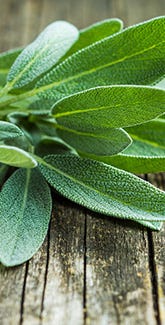How to Grow Lettuce


Lettuce Growing Guide
Confused by all the lettuce varieties out there? Lettuce explain! There are basically three different types of lettuce.
- There's Head lettuce, which includes the Crisphead cabbage type and the Butterhead floppy-headed type (also known as Bibb or Boston).
- There's Leaf lettuce, also known as cutting lettuce, which is a non-heading type that forms rosettes of curled or fringed leaves.
- And there's Romaine or cos lettuce, which forms tall cylindrical heads of elongated oval leaves.
Whether enjoyed in seasonal salads or stacked on favorite sandwiches, lettuce is a great addition to any daily diet and is packed with nutrition. Along with being a fantastic source of countless vitamins, minerals, and antioxidants, lettuce has also been found to aid in inducing sleep, lowering cholesterol levels, decreasing inflammation, and fighting cancer.
How to Plant & Grow Lettuce
- Soil: When it comes to optimal growing conditions, most lettuce requires cool weather and fertile, finely-tilled, well-drained garden soil. Pick a spot in the garden that will get ample sunshine but also some shade provided by taller plants nearby.
- Container Friendly? YES! All types of lettuce can be grown in containers. Lettuce grown in containers can be started at least 2 weeks earlier than garden grown lettuce, but container-grown lettuce will also start to bolt sooner so be sure to watch it closely.
- Sowing Seeds: In general, seeds should be planted ½ inch deep in rows 12-18 inches apart and thinned to 8-12 inches apart. Lettuce is best direct seeded in successive plantings. Start 2-3 weeks before the last frost date of spring, and then plant again at intervals of 10-14 days. Lettuce also makes an excellent fall crop; simply plant seeds 8-10 weeks before the first anticipated frost date.
- Growing: Hot weather causes most lettuce varieties to immediately produce a seed spike known as bolting (when lettuce bolts, its leaves take on a bitter, unpleasant taste). Water your lettuce crop regularly so that the soil stays moist, but be sure it also remains well-drained. You can pretty much tell by the look of your lettuce if it's in need of water as its leaves will appear somewhat wilted and dry.
- Harvesting: Leaf lettuce can begin to be harvested when the leaves are approximately 3" long. Head lettuces should be harvested before the central crown begins to elongate and bolt. Most lettuce varieties let you pick just the leaves as needed, or pull the entire head all at once. For optimal freshness and flavor, pick your leaves in the morning when they're cool, crisp, and full of moisture.
Be sure to check the planting directions on your seed packet - this will give you helpful instructions, specifically for the lettuce variety that you choose.
Did You Know? Fun Facts About Lettuce
Lettuce appears to have been domesticated from a weedy species of wild lettuce that produced lettuce leaves on the top of a tall stem. Evidence in support of this theory comes from Egyptian tomb paintings dating back 4500 years, which show bundles of stem lettuce being transported.



